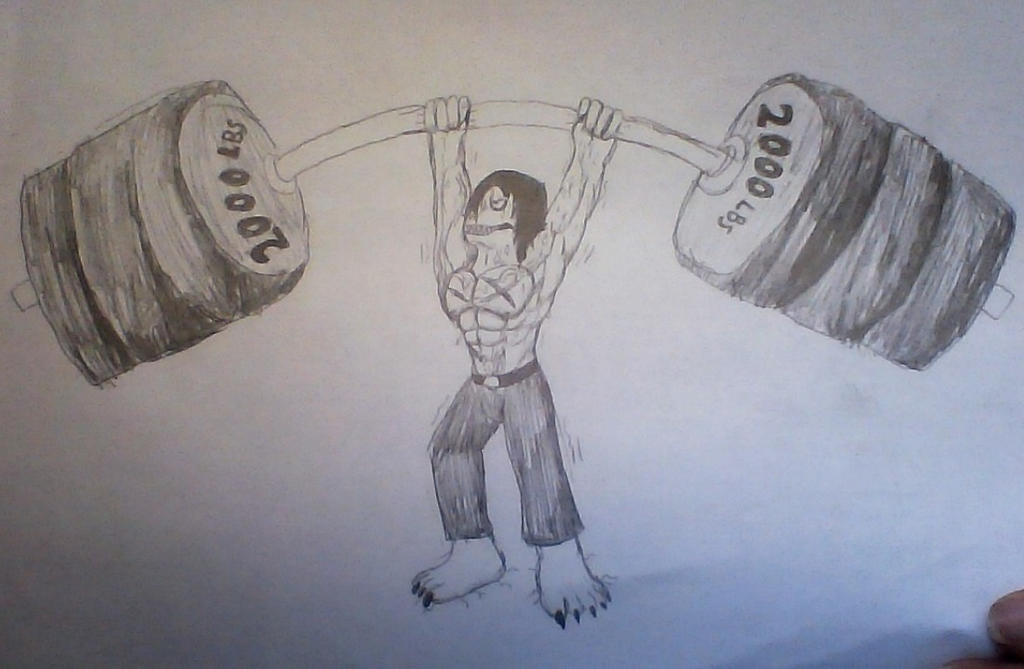Nell'ultimo post abbiamo parlato dei fattori che
influenzano la forza, ossia massa ed accelerazione; la prima è la
massa muscolare (sezione trasversale del muscolo) e la seconda è il
sistema nervoso centrale (SNC).
Per la massa, vi rimando a questo link.
Ora invece ci concentreremo sul sistema nervoso.
Ci sono sei aspetti del SNC che possiamo migliorare
per diventare più forti:
- Reclutamento delle fibre muscolari
- Fire rating
- Coordinamento intra-muscolare
- Coordinamento inter-muscolare
- Disinibizione del muscolo antagonista
- Crescita e “Potatura” delle connessioni neurali
Più c'è bisogno di forza, più aumenta il
reclutamento. Quando la tensione muscolare raggiunge la "zona di
pericolo", per esempio troppo peso, il nostro sistema nervoso
evita gli infortuni riducendo il numero di fibre reclutate. Tuttavia,
con l'allenamento, è possibile ridurre questo processo inibitorio,
il che aumenta li numero di fibre reclutate; più fibre, più forza.
Il fire rating avviene quando tutte le fibre di un
muscolo sono reclutate. In pratica, il nostra SNC sente che tutte le
fibre stanno lavorando e quindi manda più impulsi elettrici al
muscolo per dire alle fibre di contrarsi più velocemente, in modo
tale da aumentare la forza prodotta.
Il coordinamento è l'abilità del muscolo di
sincronizzare la contrazione tra le sue fibre, intra-muscolare, e con
gli altri muscoli, inter-muscolare.
In gente non allenata, le unità motorie mandano
segnali a caso ai muscoli per reclutare la forza necessaria;
allenandosi di più, il loro SNC migliora la qualità di firing delle
unità motorie.
E' come il canottaggio: la squadra andrà meglio se
tutti vogano c.on lo stesso ritmo invece che a caso.
La disinibizione del muscolo antagonista può
migliorare la forza prodotta dal muscolo agosnista. Ciò si può fare
strecciando intensamente il muscolo opposto a quello che volete
lavorare. Per esempio, strecciare i tricipiti se state pompando i
bicipiti.
Questo processo è detto inibizione reciproca; il SNC
manda segnali al bicipite di contrarsi mentre ne manda altri al
tricipite dicendo di rilassarsi.
La crescita e "potatura" delle connessioni
nervose è un processo automatico che avviene nel cervello; quindi,
non entreremo nei dettagli.
Più si pratica un movimento, più le connessioni
nervose per quel movimento diventeranno forti. Pensiamo alla tecnica
degli squat: all'inizio non si è in grado di farli in maniera
decente perché è la prima volta che si provano. Ma, dopo due, tre,
quattro settimane di pratica si diventa dei professionisti (si
spera...).
(per tutti questi
paragrafi, Low, 2011)
Va bene... ma come
alleno il mio SNC?
Per aumentare la forza
massimale, si dovrebbe lavorare con pesi tra l'80% e il 100% della
propria 1RM, da 1 a 4 serie (Bompa, 1996). Bisogna sempre ricordarsi
che questo tipo di allenamento è stremante sia per il sistema
nervoso che per i muscoli. E' meglio mantenere tempi di recupero tra
i 3 e i 6 minuti (per i pesi 95%/ 100% 1RM); questo è il tempo
necessario per ricreare le riserve di ATP all'interno dei muscoli.
Il metodo più
popolare per aumentare la forza è quello di fare esercizi aumentando
gradualmente il peso (Kurz, 2001). Un allenamento assomiglia a
questo:
(serie·ripetizioni
@x% della RM)
3·3 @60% della RM
1·3 @70% della RM
1·3 @80% della RM
2·2 @85% della RM
2·2 @90% della RM
1·3
@70% della RM
REFERENCES
Bompa, T. O. (1996). Power training for sports:
plyometrics for maximum power development. Ontario:
Mosaic Press.
Kurz, Thomas (2001). Science of sport training:
how to plan and control training for peak performance. Island
Pond: Stadion.
Low,
Stewen (2011). Overcoming Gravity: a systematic approach to
gymnastic dn bodyweight strength.


